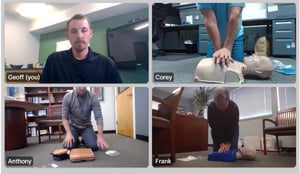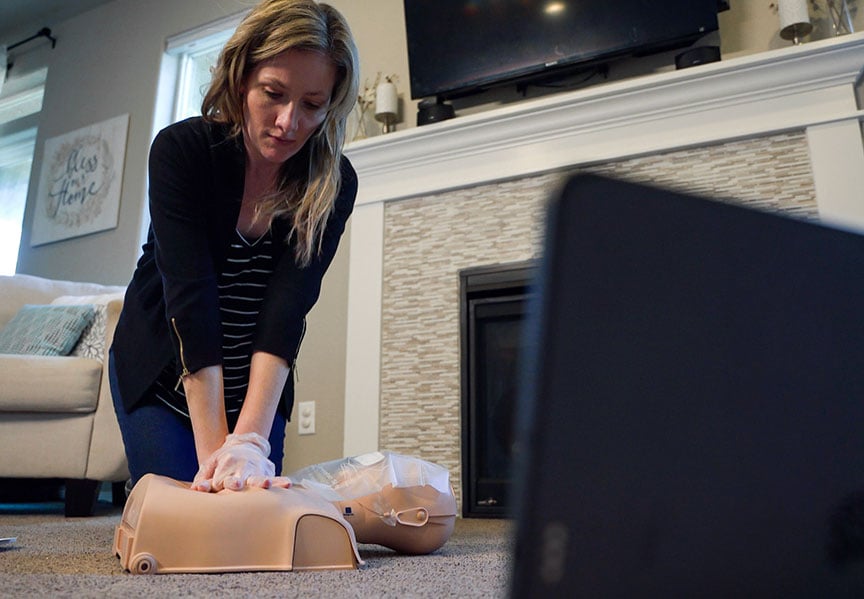State, county and municipal governments are gradually re-opening and easing restrictions brought on by the coronavirus pandemic. But the health and safety of students and instructors must continue to be top priority.
Here are some options to safely teach emergency care training programs during COVID-19.
RSV Training

Our Remote Skills Verification (RSV) option within your HSI training platform allows you to continue certifying students while remaining distant. This new technology combines existing blended learning programs with integrated video conferencing between the instructor and student(s).
We recently made some exciting updates based on customer feedback we received since our initial launch. Some of these enhancements include:
- One instructor can teach up to three students per RSV session.
- Blended student progress report.
- Blended student completion graph.
- Public or private RSV class options.
- Increased student search functionality.
If you missed our recent webinar related to these new enhancements, please watch this video at your convenience.
You can also find short, how-to videos within the Otis video tutorial section in your TC and Instructor training platforms.

In-Person Training
If you choose to move forward with in-person classroom training during this time, we must not undermine the progress that has been made in stemming the spread of coronavirus. HSI recommends that you always follow state and local guidelines for group gatherings.
Follow these TEACH COVID SAFE tips for in-person CPR, AED, and First Aid training:
T - Teach smaller classes. Don’t exceed local, state and federal guidelines for group gathering sizes.
E - Every student and instructor should have their own manikin and AED trainer.
A - Avoid non-essential travel. Use interactive videoconferencing technology to teach and remotely verify skill competence when possible.
C - Communicate the steps you’re taking to slow the spread of infection, protect students and help ensure a safe and healthy learning environment.
H - Hand hygiene. Wash your hands often with soap and water for at least 20 seconds or use an alcohol-based hand sanitizer.
C - Clean and disinfect surfaces and equipment frequently and thoroughly. Follow manufacturer and CDC guidelines.
O - Online blended learning. Use blended learning or RSV to reduce classroom contact time.
V - Visually inspect students for signs of illness, which could include flushed cheeks or fatigue. Confirm student is not experiencing coughing or shortness of breath.
I - Increase physical space. Maintain social distancing; minimum of 6 feet between instructors and students. No physical contact between instructors and students.
D - Develop and distribute flexible rescheduling policies so students can stay home when they are sick.
S - Supplies. Have proper supplies in class including hand sanitizer, tissues, trash baskets, and cleaning supplies in sufficient quantity.
A - All instructors and students should wear a cloth face covering. Avoid touching the eyes, nose and mouth.
F - Facts. Help stop the spread of rumors. Share information only from trusted sources.
E - Encourage the daily practice of everyday infectious disease prevention actions.
For additional best practices and suggestions for classroom layout, please review these in-person CPR, AED, and First Aid training guidelines. If you are teaching Basic Life Support (BLS), you can view those guidelines here.







.png?width=600&name=HSI-CTA-EmergencyCareTraining%20(1).png)











Comments